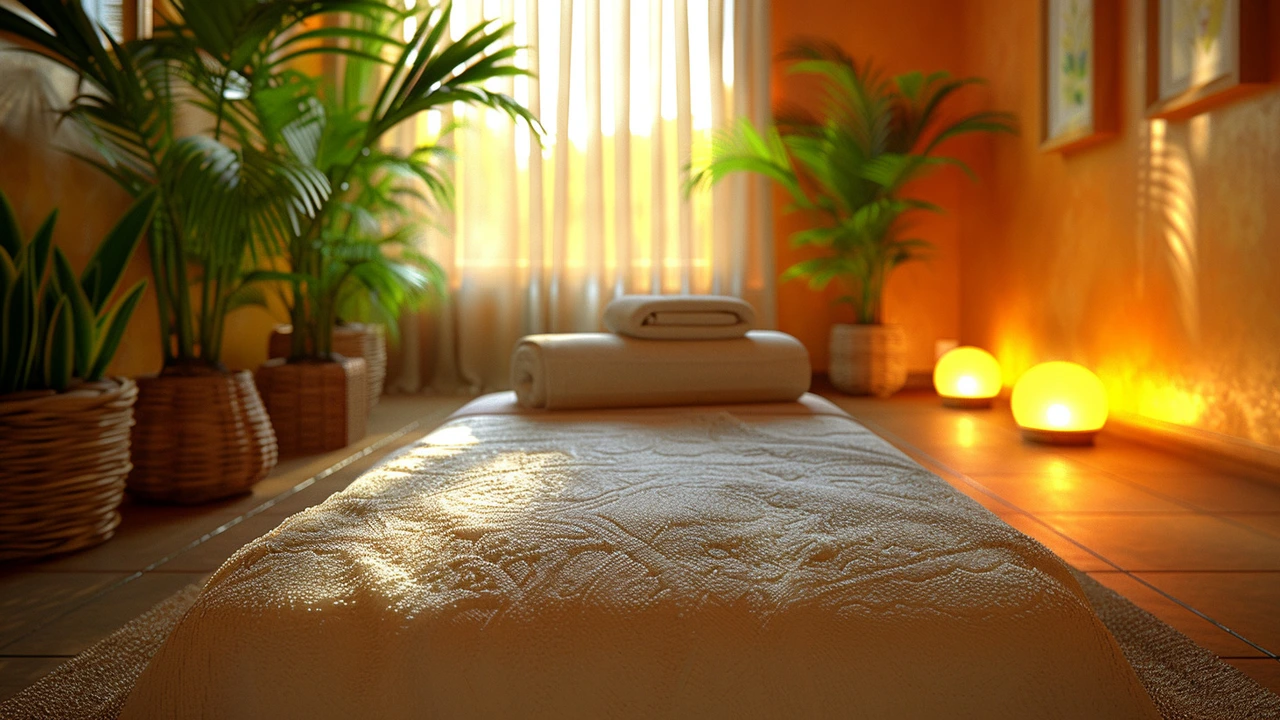
Foundations and Techniques of Ayurvedic Massage
Ayurvedic massage, known as Abhyanga, is a cornerstone of traditional Indian medicine, deeply embedded in a holistic approach to health and wellness. The practice is designed to prevent diseases, promote longevity, and nurture the body, mind, and spirit. Unlike conventional massages, Ayurvedic massage incorporates a rich blend of oils infused with healing herbs tailored to one’s Dosha (body type) which plays a pivotal role in personalizing the treatment to individual needs.
The massage isn’t just about rubbing the body, but involves specific strokes along the Marma points—vital points believed to be junctures of life force energy situated throughout the body. This targeted method helps to unlock energy channels, known as nadis, to optimize the flow of prana, or vital energy. The result is a sense of rejuvenated vitality, enhanced circulation, and detoxified systems.
Two primary techniques highlight the artistry behind Ayurvedic massage: the vigorous and warming movements are employed to stimulate and rejuvenate, while gentler, soothing strokes calm and detoxify. Thus, the massage acts on both physical and energetic levels, aiding in the reduction of stress, enhancement of flexibility, and boosting the immune system through lymphatic drainage and improved circulation.
Getting an Ayurvedic massage offers a unique ambiance characterized by the use of calming sounds, aromatic smells, and a peaceful environment that enhances the overall therapeutic effect. The holistic nature of this practice ensures that it’s not just the body that heals; stress relief and emotional clarity are equally significant benefits.
Understanding Body Types in Ayurveda
Central to Ayurveda is the concept of Doshas: Vata, Pitta, and Kapha. Each individual has a unique balance of these energies which dictates their physical, emotional, and mental characteristics as well as their vulnerabilities to particular health problems. An Ayurvedic practitioner can assess one's dominant Dosha and recommend specific oils and massage techniques that harmonize inner balance and optimize health.
The Vata type, characterized by qualities of air and ether, is typically light, dry, and mobile. For Vatas, a nurturing, soothing, and warmth-inducing massage helps counterbalance their cool and sporadic nature. Heavier oils like sesame are preferred as they provide warmth and grounding.
Pitta individuals, embodying fire and water elements, benefit from cooling and calming massage techniques. Of the three body types, Pittas have a moderate physique but can become intense and hot-tempered. Cooling oils like coconut or sunflower are recommended to soothe fiery dispositions.
The Kapha Dosha, made up of earth and water, tends to be heavy, slow, and steady. People with a Kapha constitution generally benefit from a more vigorous and stimulating massage to energize and revive their system. Light oils such as mustard or flaxseed can be ideal for invigorating Kapha types.
Health Benefits and Practical Tips for Ayurvedic Massage
The health benefits of Ayurvedic massage are extensive, impacting both physical and mental health. Regular sessions can purge toxins, bolster immunity, enhance skin health, and regulate sleep patterns. On a mental level, it helps reduce anxiety, elevate mood, and boost mental clarity. This therapeutic method is particularly effective at balancing hormones and improving digestive health as well.
People seeking relief from chronic conditions such as arthritis, fibromyalgia, and nervous disorders have reported significant improvements. The holistic influence of this massage also extends to prenatal and postnatal care, helping women manage the physical and emotional strains of pregnancy and post-birth recovery.
When integrating Ayurvedic massage into a wellness routine, it’s important to consult with a skilled practitioner who can tailor the session to your specific needs. This ensures that the massage not only provides relaxation but also works effectively as a preventive therapy against potential illnesses.
For anyone looking to enhance their well-being, scheduling regular Ayurvedic massage sessions can be a transformative investment in health. Sessions should ideally be part of a broader lifestyle approach that includes proper nutrition, adequate exercise, and mental health practices to maximize the benefits.
To get the most out of each session, it’s advisable to stay hydrated, consume light meals beforehand, and rest adequately post-massage. This allows the body to fully integrate the therapeutic effects and restore energy more efficiently.
Write a comment